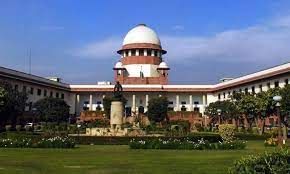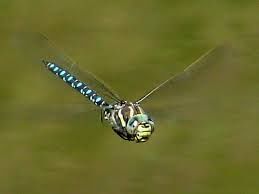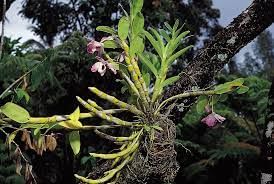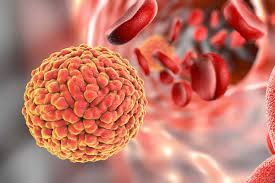UPSC Daily Current Affairs- 5th November 2023 | Current Affairs & Hindu Analysis: Daily, Weekly & Monthly PDF Download
GS-I
India’s Surface Temperature may Increase by 1.1 to 5.1 deg. Celsius by 2100
Subject: Geography

Why in News?
Surface temperatures over India were likely to increase by 1.1 to 5.1 degree Celsius by the year 2100, a new study by IIT-Kharagpur has indicated.
About the Study:
- IIT-KGP recently conducted a study titled 'Surface Temperature Increase over India during 1980-2020 and Future Projections: Causal Relationships Between Drivers and Trends,' which was published in Nature last month.
- This study was carried out in collaboration with the Indian Institute of Tropical Meteorology in Pune.
- The research aimed to analyze the long-term trends in surface temperatures across India from 1980 to 2020.
- The investigation utilized various data sources, including surface, satellite, and reanalysis data.
- The study also focused on understanding the impact of geophysical drivers on temperature changes through causal discovery methods.
Major Findings of the Study:
- The study predicts that India's surface temperature could experience a substantial increase ranging from 1.1 to 5.1 degrees Celsius by the year 2100.
- It identifies a growing trend of rising temperatures during the pre-monsoon and post-monsoon seasons in various regions of India, including the northwest, northeast, and northcentral areas.
- Notably, the actual temperature rise in India has been comparatively lower than the global average.
- The study attributes this temperature increase to high emissions and suggests that temperatures could potentially reach a remarkable 5.1 degrees Celsius.
- Under moderate emissions scenarios, it is expected that the average temperature across India may rise by approximately 1.2 to 2 degrees Celsius by the year 2100.
- In a high emission scenario, where emissions increase threefold by 2075, the average temperature is projected to surge by 3.5 to 5.1 degrees by 2100.
- However, the study acknowledges that the likelihood of the high emission scenario is low due to significant efforts to reduce emissions, but if emissions remain high, there is still a possibility of a 3-degree Celsius increase.
- The research, conducted over a span of more than two years, outlines that the temperature rise in India over the last 40 years has been evident.
- During the pre-monsoon season, temperatures have increased by 0.1 to 0.3 degrees Celsius per decade, while during the post-monsoon season, the increase is more pronounced, ranging from 0.2 to 0.4 degrees Celsius per decade.
- Notably, the study also highlights temperature increases in different parts of India during the months of October, November, and December to February over the past four decades.
- The western Himalayan region and north-east India experienced significant temperature rises, further accentuating the urgent need to address rising global temperatures and climate change.
Source: Indian Express
GS-II
Advocate-on-Record system in the Supreme Court
Subject: Polity

Recently, the Supreme Court pulled up an Advocate-on-Record (AoR) for filing a frivolous case and dismissed the public interest litigation.
- An AOR (Advocate On Record) is a lawyer in the Indian legal system who is officially registered and authorized by the Supreme Court of India to represent clients in that particular court.
- AORs possess the exclusive right to both file and argue cases in the Supreme Court on behalf of their clients.
- Only an AOR is permitted to file cases before the Supreme Court, establishing them as the primary legal representatives for this court.
- While AORs may enlist the services of other lawyers, including senior counsels, to present arguments before the Court, they essentially serve as the connecting link between litigants and the highest court in the country.
- AORs are not limited to the Supreme Court; they can also appear before other courts.
- Their scope of responsibilities encompasses tasks such as filing petitions, drafting affidavits, submitting Vakaltnama (power of attorney), and handling various applications at the Supreme Court on behalf of their clients.
- The concept behind this practice is to ensure that a lawyer with special qualifications chosen by the Supreme Court is well-equipped to represent litigants, especially in the context of the Supreme Court, which serves as the court of last resort for litigants.
- The designation of Advocate On Record exists because certain distinct skills are required when presenting cases in the Apex court.
- This system of Advocates On Record is established to uphold the standards of the quality of litigation and ensure its effective implementation. It aims to maintain the highest standards in legal representation before the Supreme Court of India.
- The Supreme Court Rules, 2013 prescribe eligibility criteria for an AoR.
- To become an AOR, an advocate must:
- Clear the exam held by the Supreme Court of India;
- Have at least four years of practice before starting the training;
- Train with a court approved AoR for at least one year;
- Score at least 60% in a three-hour exam;
- The subjects include Practice and Procedure, Drafting, Professional Ethics and Leading Cases.
- Have a registered office within a radius of 16-kilometre from the Supreme Court building;
- He/she is required to give an undertaking to employ, within one month of being registered as an AoR, a registered clerk.
- Constitutional provision
- Under Article 145 of the Constitution, the Supreme Court is empowered to make rules and regulate its own procedure for hearing cases.
- Legal provision
- According to Section 30 of the Advocates Act, any lawyer enrolled with the Bar Council is entitled to practice law before any Court or tribunal in the country.
- This provision nowhere restricts the advocate to practice in the Supreme Court.
- The only restriction is that his name should be in state roll.
- Section 52 of the Advocates Act, 1961
- This section gives power to the Supreme Court to frame the rules for practising in the court subject to Article 145 of the constitution.
- Article 145 (1) (a) says that the SC can make rules to regulate how the Court works and who can practice law there, as long as it doesn't go against any laws made by Parliament.
- According to Section 30 of the Advocates Act, any lawyer enrolled with the Bar Council is entitled to practice law before any Court or tribunal in the country.
- Constitutional validity of Rules
- These rules were challenged in the Balraj Singh Malik v Supreme Court of India.
- The court held that Section 30 was to be read with Rule 52 of the Supreme Court Rules, which preserves the rule-making power of the SC under Article 145 of the Constitution.
- The SC was therefore empowered to decide the manner as well as the right to practise of various classes of advocates before it.
Source: The Hindu
Philippines Exit from BRI
Subject: International Relations

The Philippines has announced the termination of major infrastructure projects under China’s Belt and Road Initiative (BRI) in favor of Western and Japanese competitors.
About
- The Philippines has canceled Chinese projects valued at $4.9 billion and is now exploring alternative agreements with its traditional partners, which include Japan, South Korea, the US, and the European Union.
- Several Chinese projects are anticipated to be suspended as a result of this decision. These include:
- The Mindanao Railway Project, specifically the Tagum-Davao-Digos segment.
- The Chico River Pump Irrigation Project.
- The New Centennial Water Source – Kaliwa Dam Project.
- The Samal Island-Davao City Connector project.
- A closed-circuit television project intended for multiple cities within Metro-Manila.
- Contensions in the South China Sea: The Philippines' decision to distance itself from the Belt and Road Initiative (BRI) can be traced back to longstanding bilateral disputes over contested territories in the South China Sea. These territorial conflicts have created significant friction between the two nations.
- USA Support: Following a recent collision between Chinese and Philippine sea vessels, the United States explicitly affirmed its commitment to the terms of the Philippine-U.S. Mutual Defense Treaty (MDT). Under this treaty, the U.S. has pledged to respond to any attack on Philippine ships, aircraft, or soldiers stationed in the South China Sea. This overt U.S. support further complicates the situation.
- Other Concerns: Beyond geopolitical considerations, there are additional concerns contributing to the deteriorating relationship between the two nations. These concerns include China's economic slowdown, property market crises, and the challenges associated with its investments abroad. These factors have also played a role in straining bilateral relations between China and the Philippines.
- India is not a participant in China's Belt and Road Initiative (BRI), and the Philippines' decision to distance itself from the BRI aligns with India's efforts to protect its territorial integrity and sovereign rights.
- This move by both nations underlines their shared commitment to upholding a rule-based order in the Indo-Pacific region, emphasizing the importance of adhering to established international norms and principles.
Protection of Women from Domestic Violence Act, 2005 (DV Act)
Subject: Polity and Governance

The Supreme Court recently agreed to examine whether a transgender woman can claim maintenance under the Protection of Women from Domestic Violence Act, 2005 (DV Act).
About Protection of Women from Domestic Violence Act 2005 (DV Act):
- The Domestic Violence (DV) Act in India, enacted by Parliament on September 13, 2005, and applicable throughout the country, is designed to protect wives and female live-in partners from violence perpetrated by their husbands, male live-in partners, or their respective relatives.
- The Act defines domestic violence broadly to encompass various forms of abuse, including physical, sexual, verbal, emotional, or economic abuse. Additionally, it covers harassment due to dowry demands.
- The Act extends its protection to all women, whether they are mothers, sisters, wives, widows, or partners living in a shared household.
- This protection includes relationships in the nature of marriage or adoption, as well as family members living together as a joint family.
- Any woman who has experienced domestic violence can file a complaint herself.
- In cases involving a minor child, the mother can make an application on behalf of her child.
- If the mother files an application for herself, her children can also be added as co-applicants.
- Importantly, female relatives of the husband or male partner cannot file a complaint against the wife or female partner.
- A complaint can be filed against any adult male member who has been in a domestic relationship with the woman.
- This also includes relatives of the husband or the male partner, encompassing both male and female relatives of the male partner.
- Under the DV Act, women can seek various reliefs, including:
- Protection Orders
- Residence Orders for residing in the matrimonial house
- Monetary Orders for maintenance
- Temporary custody of children
- Compensation orders for damages caused to her
- Criminal action is taken against the respondent only if they breach the relief granted by the courts.
- The Act designates Protection Officers appointed by the government to assist aggrieved women in filing cases.
- Protection Officers work closely with magistrates and help women access legal aid, obtain appropriate relief from the courts, and enforce court orders with the assistance of the police.
- Aggrieved individuals have the option to file petitions before the Judicial Magistrate Court, with the service provider, or at a nearby police station.
- Service Providers, typically members of recognized Non-Governmental Organizations (NGOs), play a vital role under the DV Act.
- They collaborate with various stakeholders to help victims of domestic violence seek justice and relief.
- Service Providers assist aggrieved women in filing Domestic Incident Reports, offer accommodation in short-stay homes for the victims and their children, provide counseling, facilitate medical treatment, and impart vocational training to enhance employability and sustainable income.
Source: The Hindu
GS-III
Odonata species
Subject: Environment and Ecology
Around 50 Odonata species were identified on the first day of the two-day Odonata survey that commenced in Mudumalai Tiger Reserve (MTR) recently.
About Odonata Species:
- Odonata is an insect order comprising three distinct groups: Anisoptera (dragonflies), Zygoptera (damselflies), and Anisozygoptera (a relict group represented by only two living species). This order is one of the ancient groups of insects, characterized by several unique features:
Distribution:
- Odonata species are found worldwide, with a global distribution that extends from tropical regions (where they are most abundant and diverse) to boreal forests in Siberia and North America.
- They are also present throughout the Southern Hemisphere, except for Antarctica. In India, Odonata exhibits high diversity, with more than 500 known species.
Habitat:
- Odonata species occupy a range of habitats, primarily freshwater environments, including ponds, rivers, and lakes.
- Their larval stage is associated with bodies of water, where they undergo development.
Distinctive Features:
Odonata can be distinguished from other insect groups by several key characteristics:
- They possess minute antennae.
- Their large, prominent eyes occupy a significant portion of the head.
- They have two pairs of transparent membranous wings with numerous small veins.
- A long, slender abdomen is a defining feature.
- Odonata undergo an aquatic larval stage, known as a nymph.
Visual Acuity:
- Odonata have remarkable visual acuity, with over 80% of their brain dedicated to processing visual information. This adaptation contributes to their effectiveness as predators.
Appearance and Behavior:
- Adult odonates are typically large, active during the day, and often display striking colors. They are commonly observed in flight near bodies of water.
- Their mouths are adapted for biting, making them efficient hunters, both in their nymph and adult stages.
- Adult odonates, as well as their aquatic larvae, are voracious predators, actively hunting for prey.
Key Facts about Mudumalai Tiger Reserve:
- Location:
- It is located in the Nilgiris District of Tamil Nadu, spread over 321 sq. km. at the tri-junction of three states, viz, Karnataka, Kerala, and Tamil Nadu.
- It lies on the Northeastern and Northwestern slopes of the Nilgiri Hills,which are part of the Western Ghats.
- It is part of the Nilgiris Biosphere Reserve, the first Biosphere Reserve in India.
- It has a common boundary with Wayanad Wildlife Sanctuary(Kerala) on the West, Bandipur Tiger Reserve (Karnataka) on the North, the Nilgiris North Division on the South and East, and Gudalur Forest Division on the South West.
- The name Mudumalai means ” the ancient hill range”. Indeed, it is as old as 65 million years when the Western Ghats were formed.
- Terrain: The terrain is undulating,with the elevation ranging from 960m to 1266m.
- Habitat: A variety of habitats ranging from tropical evergreen forest, moist deciduous forest, moist teak forest, dry teak forest, secondary grasslands, and swamps are found here.
- Flora:
- It has tall grasses, commonly referred to as “Elephant Grass”, bamboo of the giant variety, and valuable timber species like Teak, Rosewood, etc.
- It has wild relatives of cultivated plants: wild rice, ginger, turmeric, cinnamon, etc.
- Fauna: Includes Tiger, Elephant, Indian Gaur, Panther, Sambar, Spotted Deer, Barking Deer, Mouse Deer, Common Langur, Malabar Giant Squirrel, Mangoose, and Hyena, among others.
- The recent Oscar-winning ‘Elephant Whisperers’was filmed at the Theppakadu Elephant Camp, located inside the Mudumalai Tiger Reserve.
Source: Indian Express
New epiphytic plant
Subject: Environment and Ecology

Why in News?
Scientists of the Botanical Survey of India (BSI) have discovered a new species of epiphytic plant, Lysionotus namchoomii, from the Pakke-Kessang district of Arunachal Pradesh.
About the New epiphytic plant:
- It is named Lysionotus
- Range: The native range of the genus Lysionotus is the Himalayas to Japan and Indo-China, and about 50% of the species found are endemic.
- Species of the genus are mostly epiphytic, lithophytic, or terrestrial evergreen erect or climbing subshrubs.
- The new species bears thick leaves and attractive purple flowers.
- The conservation status of this new species is provisionally assessed as ‘Critically Endangered’, in accordance with the International Union for Conservation of Nature (IUCN) Red List.
- It is epiphytic in nature and grows another plant.
- Epiphytic plants are mostly found in tropical and subtropical
Key Facts about the Botanical Survey of India
- It is the apex taxonomic research organisation of the country, which is under the Ministry of Environment, Forest & Climate Change, Government of India.
- It was established on 13th February 1890 under the direction of Sir George King.
- The mandate of the organisation has been broadened to includebiosystematics research, floristic studies, documentation, databasing of National Botanical collection, digitization of herbarium specimens,
- Headquarters: Kolkata
Source: The Hindu
Zika Virus Outbreak
Subject: Science and Technology

Why in News?
Five Karnataka villages come under surveillance after Zika virus outbreak.
About:
- Zika Virus Transmission: Zika virus is primarily spread by infected mosquitoes, particularly those of the Aedes (Stegomyia) genus, primarily Aedes aegypti, in tropical and subtropical regions. Aedes mosquitoes are known for their daytime biting habits and also transmit diseases like dengue, chikungunya, and urban yellow fever.
- Other Modes of Transmission: Zika can also be transmitted from mother to fetus during pregnancy, as well as through sexual contact, blood transfusion, and potentially through organ transplantation.
- Discovery and Early Spread: The virus was initially identified in Uganda in 1947, initially in a Rhesus macaque monkey, with subsequent evidence of infection and disease in humans across various African countries in the 1950s. Sporadic human infections were observed in Africa and Asia from the 1960s to the 1980s.
- Symptoms: Most Zika virus-infected individuals do not display symptoms. For those who do, symptoms typically appear within 3-14 days after infection and are generally mild, including rash, fever, conjunctivitis, muscle and joint pain, malaise, and headache, lasting for 2-7 days.
- Diagnosis: Zika virus infection can only be confirmed through laboratory tests of blood or other bodily fluids. It's essential to differentiate it from other related flaviviruses like dengue, to which the patient may have had prior exposure or vaccination.
- Treatment: There is no specific treatment for Zika virus infection or associated diseases. Individuals with symptoms such as rash, fever, or joint pain are advised to get ample rest, stay hydrated, and manage symptoms with antipyretics and/or analgesics.
Source: The Hindu
|
52 videos|5374 docs|1136 tests
|
FAQs on UPSC Daily Current Affairs- 5th November 2023 - Current Affairs & Hindu Analysis: Daily, Weekly & Monthly
| 1. What is the projected increase in India's surface temperature by 2100? |  |
| 2. What is the Advocate-on-Record system in the Supreme Court? |  |
| 3. Why did the Philippines exit from BRI? |  |
| 4. What is the purpose of the Protection of Women from Domestic Violence Act, 2005 (DV Act)? |  |
| 5. What are Odonata species? |  |





















